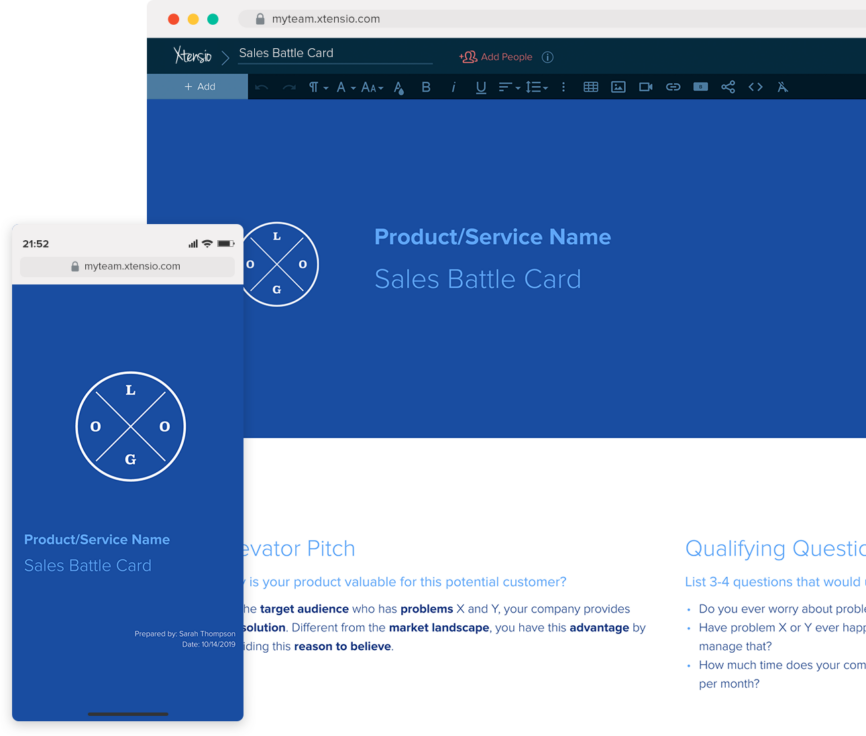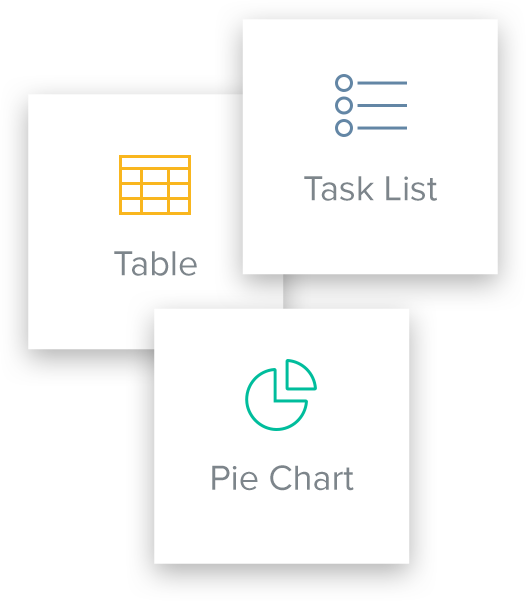How To Make Sales Battle Cards
Updated by Xtensio
The sales battle card is a concise, one-page overview of your product or service and includes competitive intelligence, and information about your customers and your market. Essentially, this is your sales team’s cheat sheet to help them win deals quicker. Use this step-by-step guide to create and iterate on your sales battle cards, easily. Explore this template.
Xtensio is your team space for beautiful living documents.
Create, manage and share business collateral, easily.
Table of Contents
Your guide to creating sales battle cards that help you close sales faster and more efficiently
The Sales Battle Card provides sales teams with a concise overview of your product or service, the market, your customers, and your competition. It also outlines frequent customer questions/concerns and the different pricing packages your company offers. This battle card is your sales team’s cheat sheet to help them win deals quicker; it can also be useful for your customer support reps. It is a concise, one-page overview of your product or service, with competitive intelligence, information about your customers, and your market – and includes important details about customer pain points and key differentiators that make your company stand out.
- Deliver compelling and effective sales pitches.
- Track and stay one step ahead of the competition.
- Prepare sales reps for situational pitches based on each use case.
With Xtensio, you can easily generate sales battle cards tailored to your individual products or services. Loop in colleagues, clients, and key stakeholders to create and iterate on your battle cards. You can work hand-in-hand with colleagues on a live doc, leave feedback, and share a link so everyone has the information they need to sell your products.
1. Create your sales battle card header and set a goal for your sales team
Before you get started creating your battle card, talk to your sales reps and sales leaders to find out their needs. You need a clear idea of what sales challenge you are looking to address. These may include:
- News sales reps need guidance on your overall competitive advantage and value propositions
- Sales reps need to know how to position your product or service in relation to a competitor
- Details, benefits, feature sets or services are difficult to describe for the sales team
- Your team is struggling to break into a new market
Once you understand your sales team’s particular challenges, you can set a goal for your sales battle card. Think of measurable KPIs, like:
- Increasing contract value by 5%
- Increasing upsells for new products/services by 10%
- Bringing in 7 new customers per month from a specific audience segment
Then it’s time to start gathering the details of your sales battle card. Introduce your battle card with your company or your client’s company name and logo, and add the date it was created and who prepared the battle card. You can also update the folio color scheme and background to match your company branding.
QUICK TIP: Once you set up your header section, you can save a custom template to easily repurpose for other battle cards.
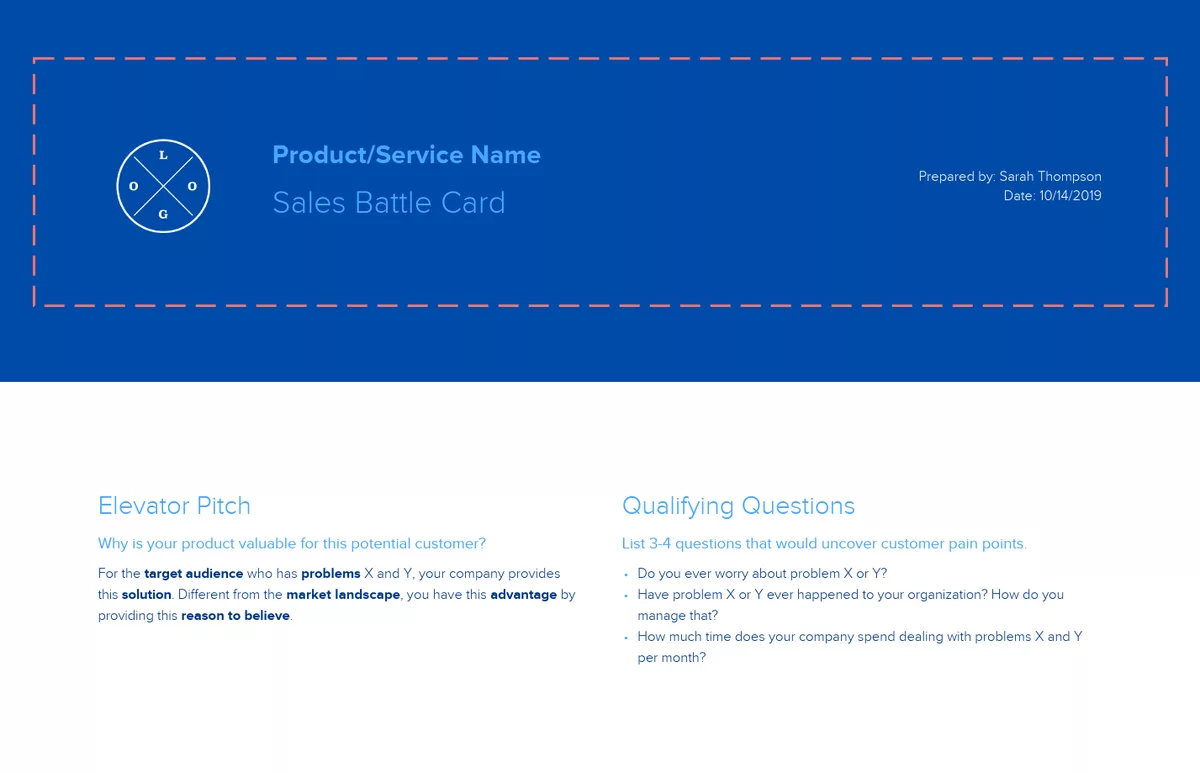
2. Highlight your company mission and vision, and outline qualifying questions
Your elevator pitch should explain why your product is valuable for potential customers. After doing your research, complete the following statement:
For the target audience who has problems X and Y, your company provides this solution. Different from the market landscape, you have this advantage by providing this reason to believe.
After outlining what your brand’s value proposition is, your battle card should list 3-4 questions that would uncover customer pain points. For example:
- Do you ever worry about problems X or Y?
- Have problems X or Y ever happened to your organization? How do you manage that?
- How much time does your company spend dealing with problems X and Y per month?
QUICK TIP: Fill out the Brand Positioning Canvas template to determine your company’s value proposition.
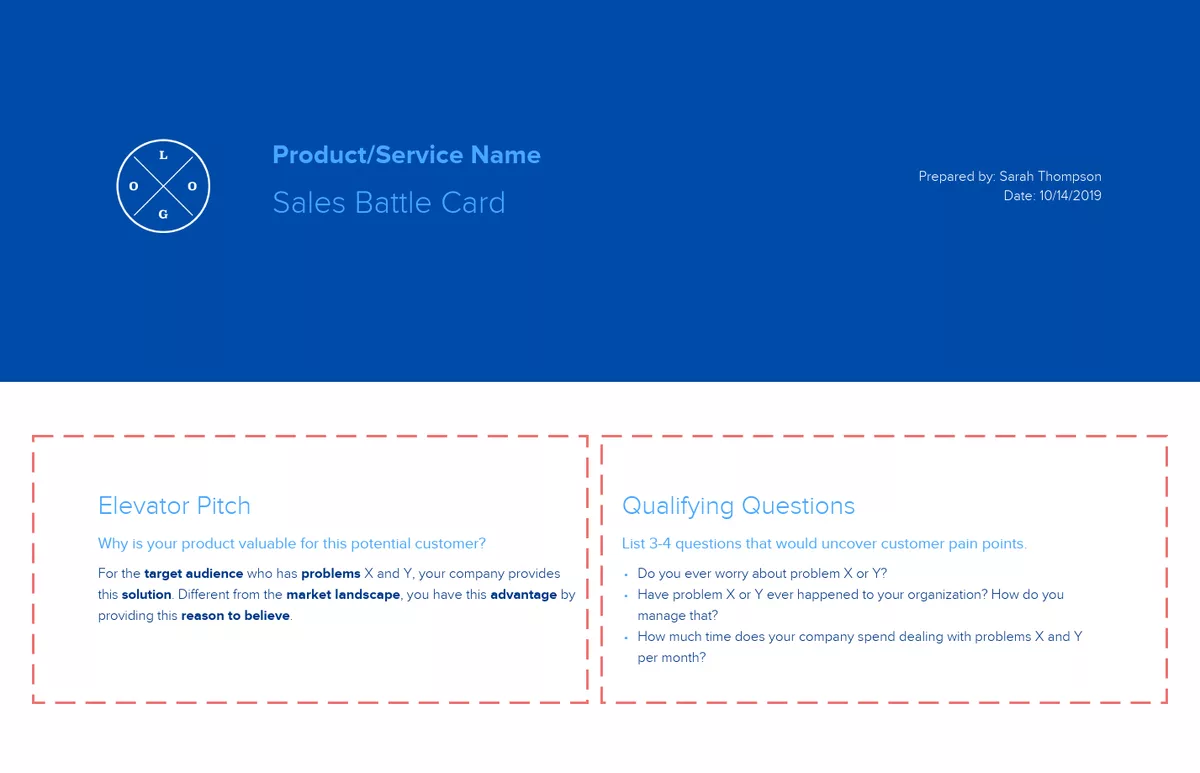
3. Define your target customer
Who is your ideal customer? What is their main business problem or pain point? Identify 3 to 4 buyer personas to define your target audience and give your sales team personas they should be able to sell to.
This is also a good place to include information on how to identify opportunities to cross-sell and upsell.
QUICK TIP: Try the User Persona Creator and Persona Comparison tools to clearly identify your target audience.
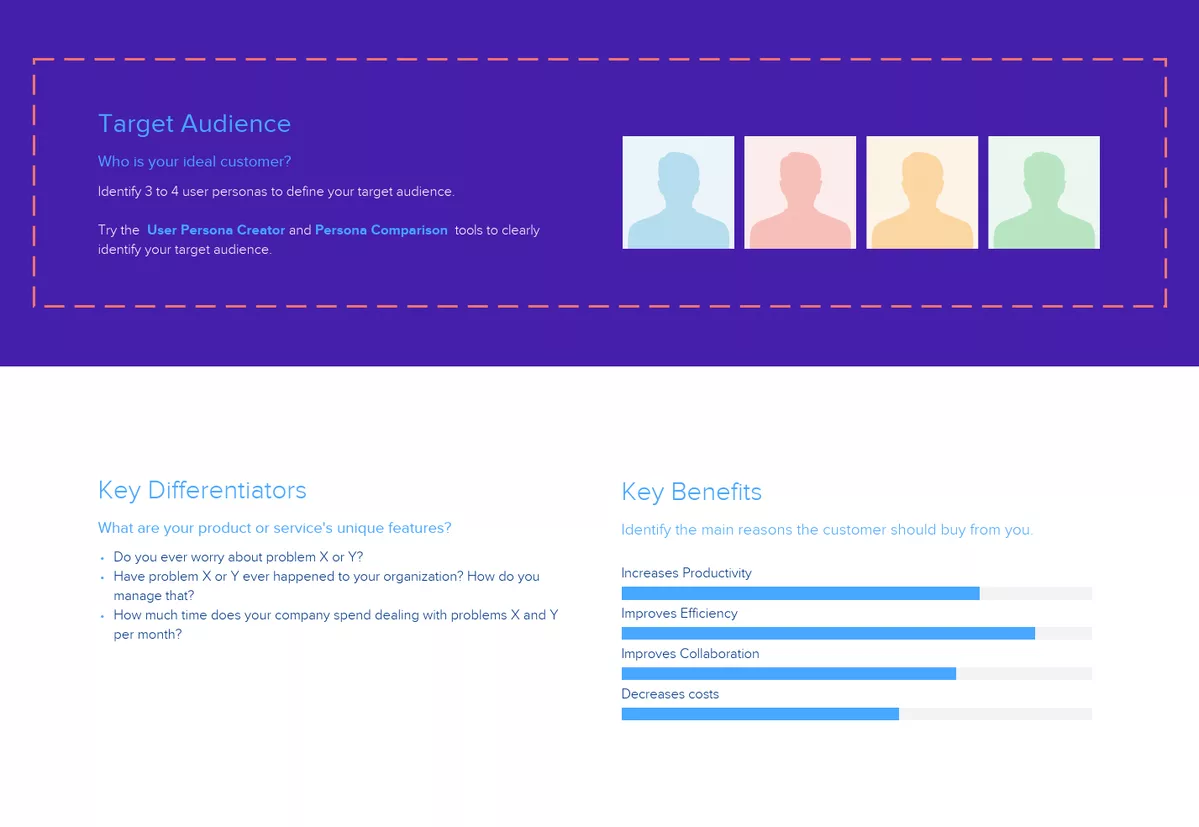
4. Highlight key differentiators and key benefits your product or service provides in relation to your competition
What are the most important features or differentiators about your product that a sales rep should know? What are your product or service’s unique features? Identify the main reasons the customer should buy from you.
Outline questions your sales team can ask customers to highlight your product’s value:
- Do you ever worry about problems X or Y?
- Have problems X or Y ever happened to your organization? How do you manage that?
- How much time does your company spend dealing with problems X and Y per month?
This section should be a collaborative effort. Ask your Marketing, Product, and Sales teams what the most popular, most used, and most desired features are.
Quick Tip: Use the Competitive Analysis template to understand your competition and uncover your product’s values and differentiating features. Then loop in your marketing, product and sales leads to collaborate on your battle card.
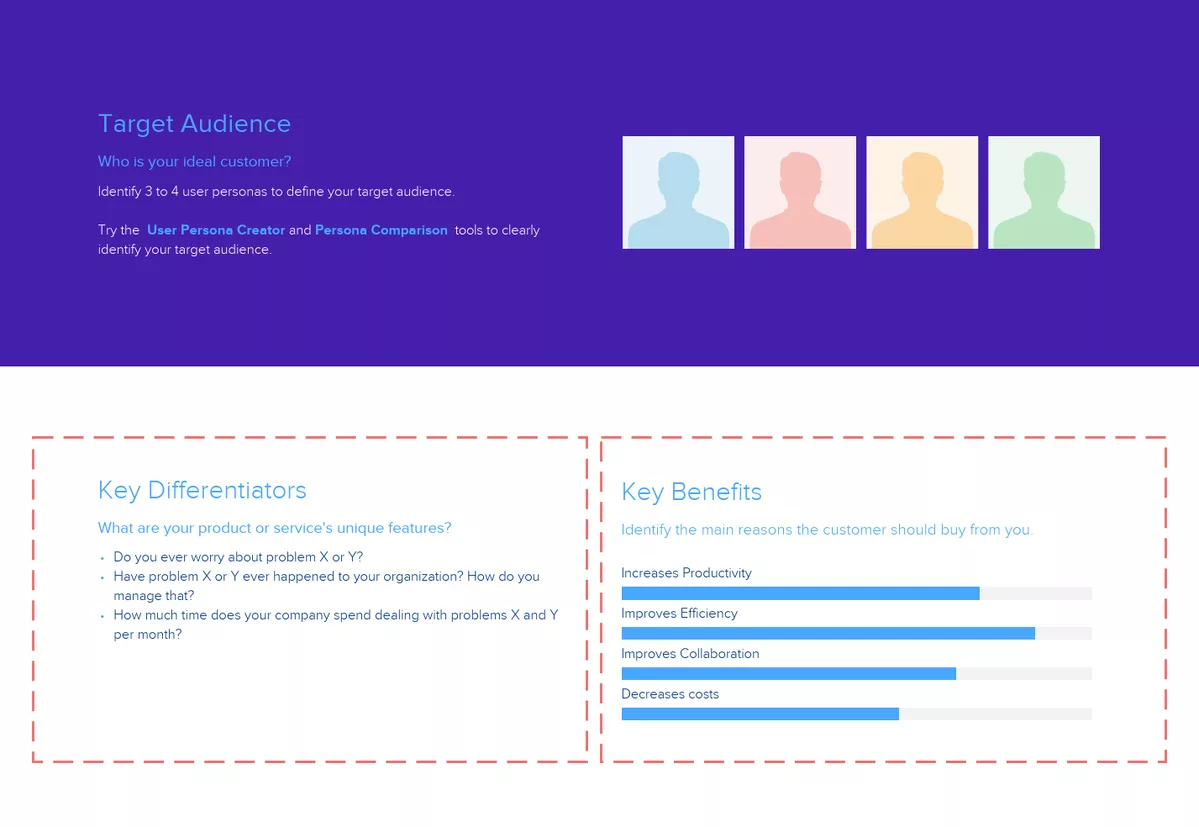
5. Research common customer objections and include answers for sales reps to use
It is critical to address any potential difficulties that customers may have with your product or service. You dramatically boost your chances of closing sales by providing your sales staff with a proactive strategy to address and respond to common objectives. These objections can also be used to educate people about your product or service.
Some common customer objections may include:
- Why customers would potentially choose the competition
- Purchasing roadblocks or cost objections
- Any negative impressions of your product and how to address them
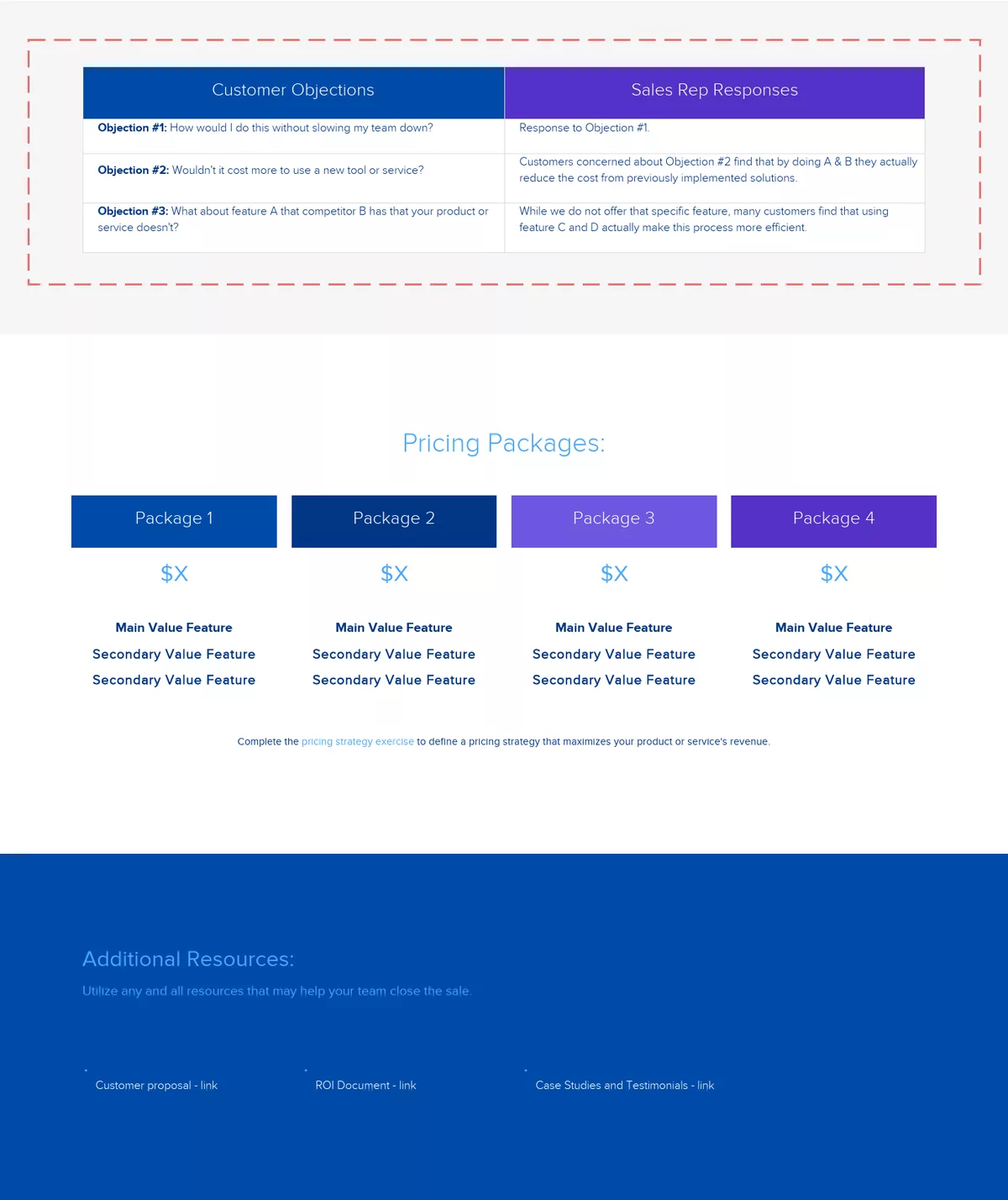
6. Outline your pricing packages and key features
Complete the pricing strategy exercise to define a pricing strategy that maximizes your product or service’s revenue. Be sure to include key features and give your team the tools they need to address price objections or common questions about subscription payments, upsells, etc.
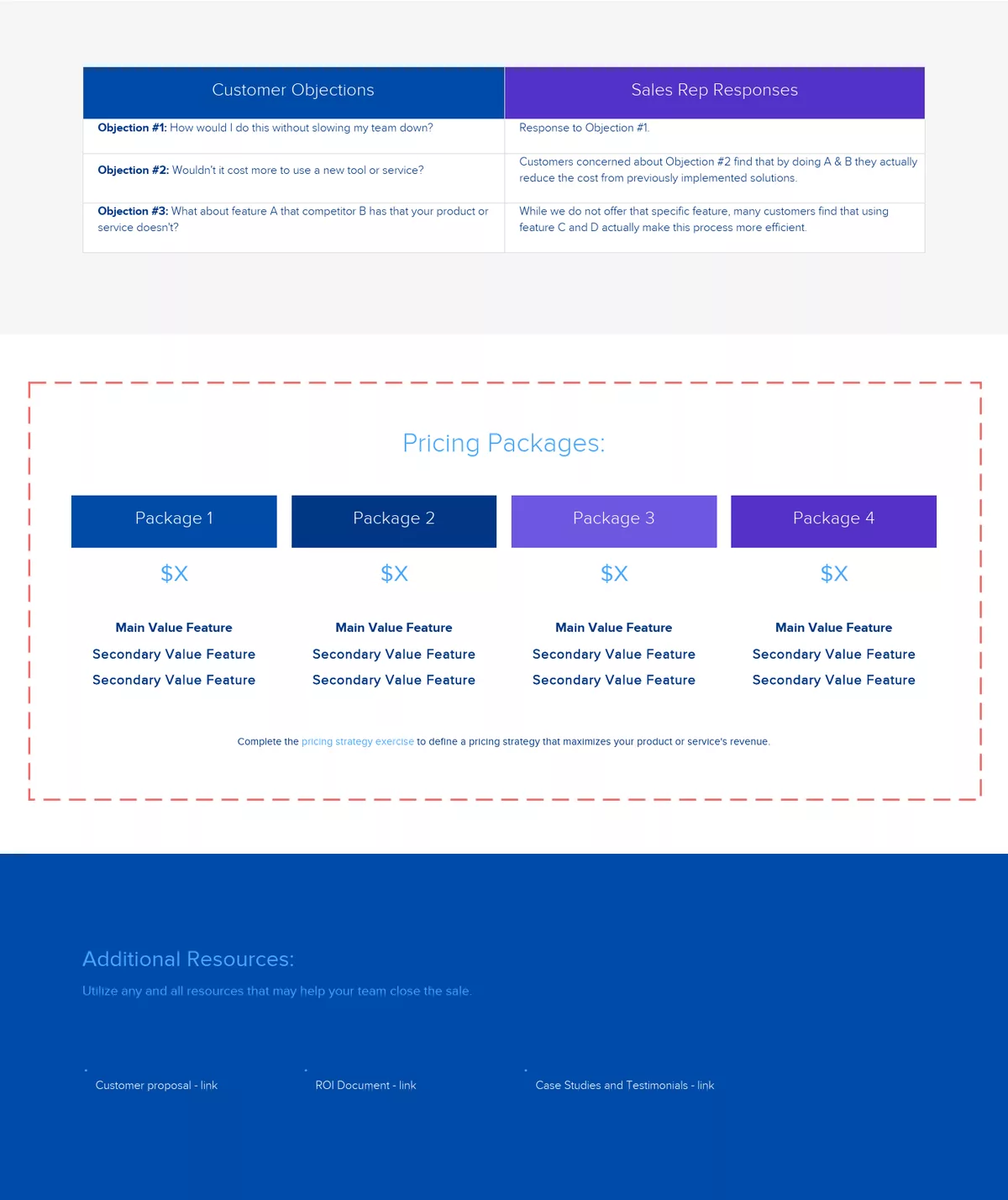
7. Provide important resources
Proof of customer success is key in creating an impactful sales battle card. Potential buyers want to know how they will benefit from using your product or service, and they want examples of how your product is used by real customers.
Include important links to your company website, reviews, case studies, charts and graphs that will help with sales enablement. Be specific and include real numbers and statistics that demonstrate how customers have used your product. (How much time did they save? Did they increase their revenue or decrease expenses?)
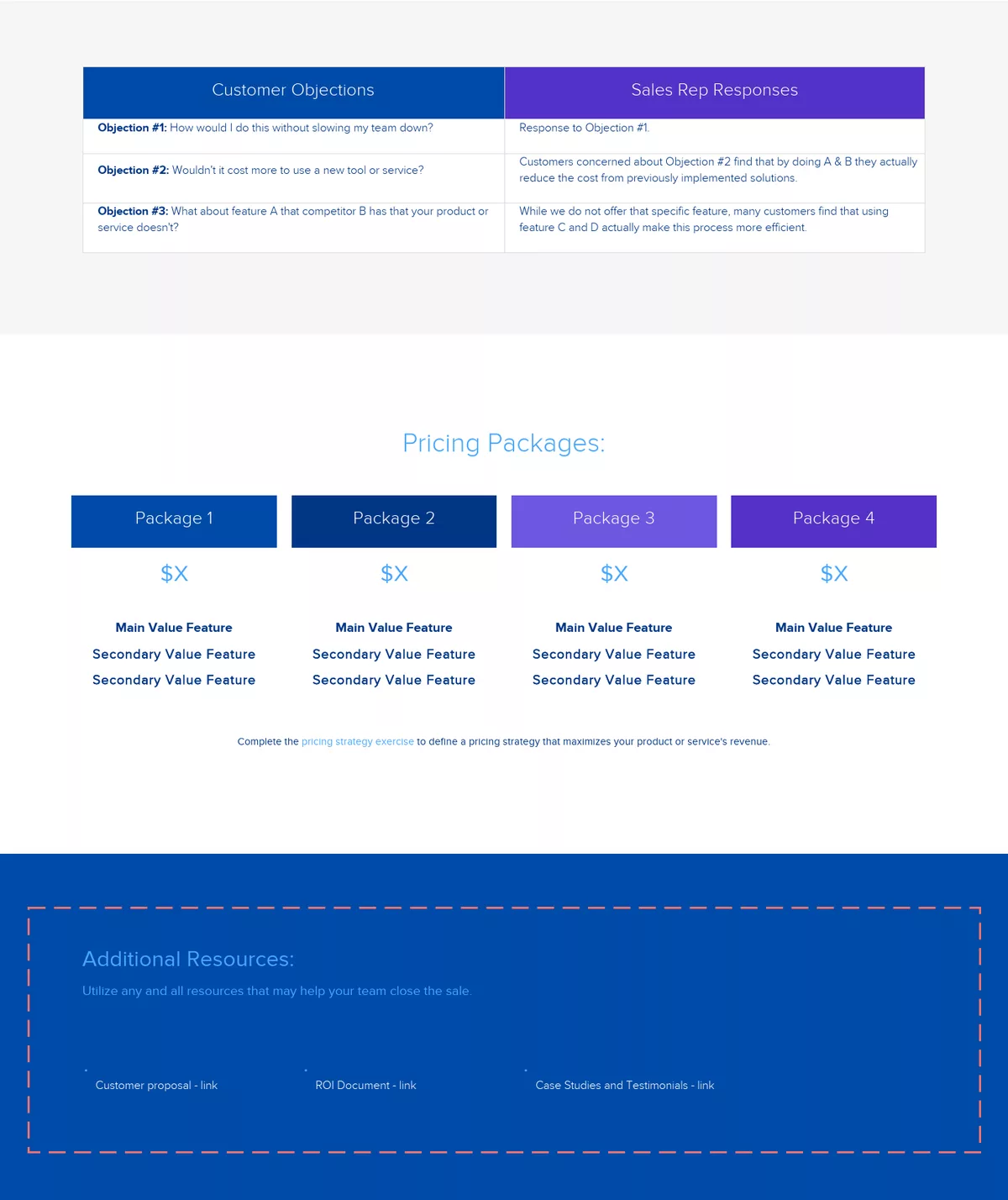
Share your sales battle card as a link, monitor, evaluate & iterate
When you’ve finished creating your sales battle card with Xtensio’s editor, you can send the live link to share it as a responsive webpage (and add password protection), export a PDF and post it on your bulletin board and continuously optimize with new learnings. The sales battle card template is adaptable just like other Xtensio tools, it can and should be repurposed, revisited, and revised regularly.
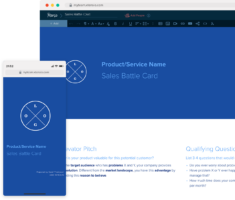
Design, manage and share beautiful living documents… easily, together. Explore Xtensio
- Click and edit anything… together.
- Customize to match your branding.
- Share with a link, present, embed or download.
